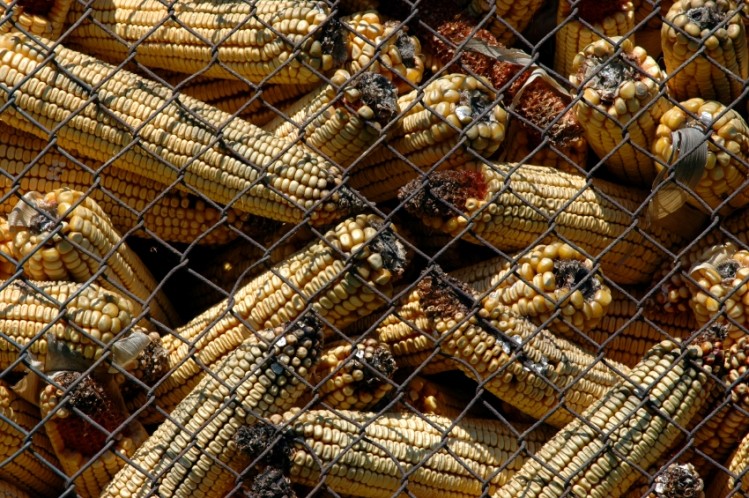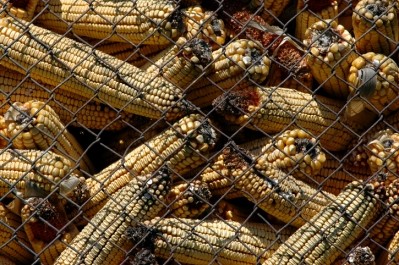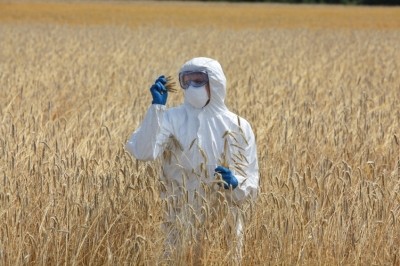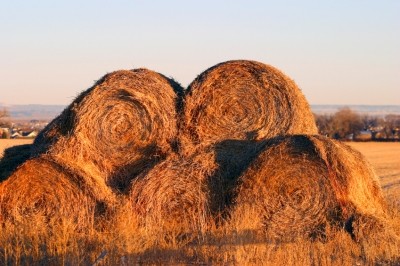Review of mycotoxin controls shows prevention better than cure

The authors, including Leon Marchal, director of nutrition and innovation at Dutch feed group, ForFarmers, along with Thomas van der Poel and W X Peng from the animal nutrition group at Wageningen Institute of Animal Sciences, analyzed strategies for feed manufacturers to minimize mycotoxin hazards.
Their review of the literature was published in Animal Feed Science and Technology.
The research team evaluated physical, thermal, chemical and feed additive derived mycotoxin reduction methods. “The first three methodologies mainly focus on how to reduce mycotoxins in feed ingredients during processes, while the last one on how to compensate the adverse impacts of mycotoxin-contaminated diets in animal bodies.”
"Mycotoxins are the secondary metabolites of fungi, especially moulds. They have over 300 types and can be easily produced ubiquitously by moulds. Many mycotoxins have been found to be toxic to most farmed animals through their diets.
"With the globalization of feed ingredient trade and the rapid climate changes, occurrence of mycotoxins [has] become increasingly difficult to predict. Thus, unnoticeable mycotoxin hazards can directly impact animal production systems.
"Preventing or minimizing mycotoxins in feed ingredients has [thus] become an important topic [for the] feed manufacturing industry."
Most of the control strategies reviewed show evident mycotoxin reducing effects, but to varying degrees, they concluded.
Feed additives for mycotoxin detoxifying through binding are useful but still less than ideal, they said.
“Even though the organic feed additives could exclude the disadvantages of the inorganic ones, highly varied inner environments (e.g. pH) of animal GI tracts can greatly affect the efficacy of these biological treatments (Karlovsky, 2011).”
Further research is needed around such feed additives to more consistently demonstrate their efficacy in vivo, they said.
Biological feed additives - microbes - could represent an alternative detoxification method but they are still in their infancy and need breakthroughs, added the authors.
Masked mycotoxins also provide additional challenges for current mycotoxin control strategies, they noted.
Findings
In terms of key learnings for the feed industry, the team said there is not one individual method that is unconditionally effective to eliminate mycotoxin contamination in crops or to prevent the consequent impacts on animal health.
Physical removal strategies are the most recommended control method, with cleaning and sorting methods widely applied because they work as first-line barriers to free materials from various contaminants, including mycotoxins, said the reviewers.
The mycotoxin reducing effects of other feed manufacturing technologies like milling and dehulling are inconsistent, and some physical removal methods can result in high grain mass loss. Dehulling is limited since it can only be used with a limited range of crops like legumes, which are anyway, generally, less contaminated by mycotoxins, added the authors.
Thermal methods generally show limited mycotoxin reducing effects, and are less recommended than physical removal methods, they continued.
The cost and effectiveness of thermal methods vary: "Cheap methods, like IR, seem less effective towards mycotoxins, while some methods showing evident mycotoxin controlling effects, like gamma irradiation, are costly. In addition, it is still doubtful whether the ‘decreased’ mycotoxins are transferred into undetectable toxic derivatives, like masked mycotoxins."
They said extrusion cooking is a promising process for mycotoxin reduction, since it combines different processing methodologies including shearing and heating (Bullerman and Bianchini, 2007). "Moreover, the radicals formed during the extrusion cooking (Ullsten et al., 2006; Schaich, 2002; Schaich and Rebello, 1999) may also have an effect on the breakdown of mycotoxins."
The mycotoxin reducing effects of some feed additive products would seem to be promising, particularly after some were officially included as ‘feed additives’ (EC, 2013), they noted.
However, while some in vitro studies have supported their potential to detoxify contaminated feedstuffs, their actual functions in animal bodies still need to be further demonstrated, stressed the authors.
“In conclusion, mycotoxin prevention management and the processing stage of cleaning and sorting are still the most efficient strategies to control mycotoxin hazards in current feed manufacturing.”
Source: Animal Feed Science and Technology
DOI: https://doi.org/10.1016/j.anifeedsci.2018.01.017
Title: Strategies to prevent and reduce mycotoxins for compound feed manufacturing
Authors: W.-X. Peng, J.L.M. Marchal, A.F.B. van der Poel















